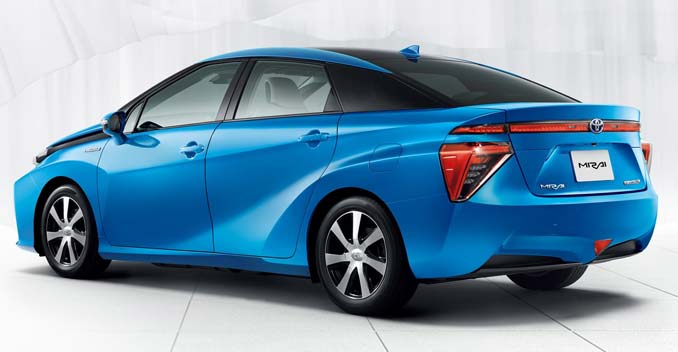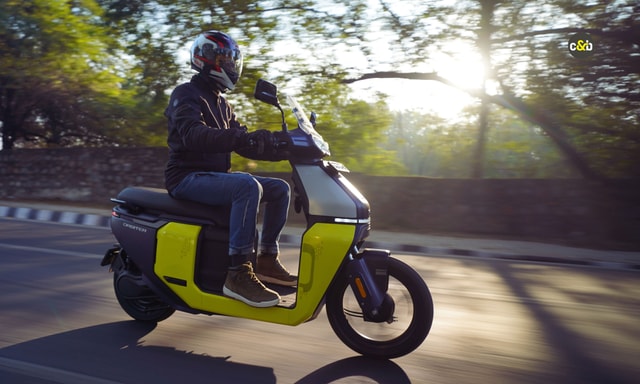Toyota Goes Down The Toilet, Literally

- Toyota is converting sewage sludge and human waste into hydrogen
- The process is taking place at the Fukuoka Water Processing Plant, Japan
- The plant produces 300Kg of hydrogen per day, enough to fuel 65 Mirais
In a bid to aid in solving the global warming crisis, Toyota might soon start using human waste to power its upcoming electric cars. Apparently, the Japanese auto giant has found a way to convert sewage sludge, which is mostly made up of human waste, into hydrogen that can fuel cars like the Mirai.
Apparently, for this special project, it looks like Toyota is working in conjunction with the Fukuoka City Central Water Processing Plant, in Fukuoka, Japan. Usually, sewage in such water treatment plants is separated into liquid and solid waste. The solid waste called sewage sludge, which is a foul-smelling, brown lump that mostly ends up in landfills. But the folks at Fukuoka try to extract as much good from it as possible. Microorganisms are added to the mix, which breaks down the solid waste, creating biogas that is made up of about 60 per cent methane and 40 per cent carbon dioxide. Then, workers filter out the CO2 and add water vapour, which creates hydrogen and more CO2. They extract the CO2 again, and voila: pure hydrogen.

Now before you go ahead and start praising the Japanese for their smart idea let us tell you, the process is not new or any advanced technology. In fact we Indians have been doing the same thing for years, and that is exactly what Marc Melaina, a senior engineer at the National Renewable Energy Laboratory in Denver pointed out. He said, "In India, they have loads of biogas plants in villages and such that are just part of their energy infrastructure."
Essentially the sewage sludge, as mentioned earlier, is usually dumped in landfills, and in the case of biogas, it's most often burnt. In other words, there's no downside to using it to produce hydrogen instead. "They have to treat the water, and biogas is a natural by-product of that process," Melaina says. "You can burn it, you can turn it into electricity or you can turn it into hydrogen."
Now, Toyota has been one of the few carmakers, who have been continuously working to find new natural and sustainable fuel source to build zero-emission cars. While hydrogen fuel cells have proven to be an excellent option, Yoshikazu Tanaka, the chief engineer of the Toyota Mirai, Toyota's hydrogen fuel cell car, calls it a "chicken or the egg" problem. Apparently, no one wants to purchase hydrogen cars because there are no hydrogen fuel stations, and nobody wants to build hydrogen fuel stations because there are no hydrogen cars.
This is why Tanaka and several other experts feel that making hydrogen from sewage is probably one of the most economical ways to get sustainable fuel source for hydrogen-powered electric cars. To prove his point Tanaka said that currently, the Fukuoka plant produces 300 kg of hydrogen per day, enough to fuel 65 Mirai vehicles. If all the biogas produced by the plant were converted to hydrogen, that number would jump to 600 cars per day.
Source: Quartz (qz.com)
Latest News
 Jaiveer Mehra | Jan 6, 2026Mahindra XUV 3XO EV Launched In India; Prices Start At Rs 13.89 LakhEssentially the successor to the XUV 400 EV, the 3XO EV is offered in two trim levels and solely with a 39.4 kWh battery.1 min read
Jaiveer Mehra | Jan 6, 2026Mahindra XUV 3XO EV Launched In India; Prices Start At Rs 13.89 LakhEssentially the successor to the XUV 400 EV, the 3XO EV is offered in two trim levels and solely with a 39.4 kWh battery.1 min read Jaiveer Mehra | Jan 6, 2026Nissan Tekton SUV World Premiere On February 4The Tekton will make its debut hot on the heels of the Gravite and will share its platform with the upcoming new Duster.1 min read
Jaiveer Mehra | Jan 6, 2026Nissan Tekton SUV World Premiere On February 4The Tekton will make its debut hot on the heels of the Gravite and will share its platform with the upcoming new Duster.1 min read car&bike Team | Jan 6, 2026New Bajaj Chetak With Hub Motor To Be Launched On January 14Expected to be positioned as a more affordable derivative of the iconic Bajaj scooter, the newest member of the Chetak family will be targeted at the TVS Orbiter and Vida VX2.2 mins read
car&bike Team | Jan 6, 2026New Bajaj Chetak With Hub Motor To Be Launched On January 14Expected to be positioned as a more affordable derivative of the iconic Bajaj scooter, the newest member of the Chetak family will be targeted at the TVS Orbiter and Vida VX2.2 mins read Jaiveer Mehra | Jan 6, 2026Nissan Gravite MPV To Debut On January 21B-segment MPV to share its underpinnings and powertrain options with the Renault Triber.1 min read
Jaiveer Mehra | Jan 6, 2026Nissan Gravite MPV To Debut On January 21B-segment MPV to share its underpinnings and powertrain options with the Renault Triber.1 min read Jaiveer Mehra | Jan 6, 2026Mahindra XUV 7XO Prices, Variants ExplainedFacelifted SUV is offered in a choice of six variants and with petrol and diesel engine options.1 min read
Jaiveer Mehra | Jan 6, 2026Mahindra XUV 7XO Prices, Variants ExplainedFacelifted SUV is offered in a choice of six variants and with petrol and diesel engine options.1 min read car&bike Team | Jan 5, 2026Updated Simple One Electric Scooter Launched At Rs 1.50 Lakh; 5 kWh Variant Promises Up To 265 KM RangeWith a series of changes made to the existing scooter, the start-up claims to have improved range, top speed as well as on-road behaviour of the Simple One.1 min read
car&bike Team | Jan 5, 2026Updated Simple One Electric Scooter Launched At Rs 1.50 Lakh; 5 kWh Variant Promises Up To 265 KM RangeWith a series of changes made to the existing scooter, the start-up claims to have improved range, top speed as well as on-road behaviour of the Simple One.1 min read
 Amaan Ahmed | Jan 3, 2026VLF Mobster 135 300 KM Review: Fun But FlawedA 125 cc scooter with Italian design and Chinese genes is a rare combination, and while some may be tempted to dismiss it because of its origins, the VLF Mobster shows 125s can also be exciting – but not without compromises.11 mins read
Amaan Ahmed | Jan 3, 2026VLF Mobster 135 300 KM Review: Fun But FlawedA 125 cc scooter with Italian design and Chinese genes is a rare combination, and while some may be tempted to dismiss it because of its origins, the VLF Mobster shows 125s can also be exciting – but not without compromises.11 mins read Preetam Bora | Dec 30, 2025TVS Orbiter Review: Real-World Performance and Range TestedThe TVS Orbiter is a promising electric scooter promising decent range, practicality and pricing. But is there any reason to avoid it? We spent a few days getting to know it better.9 mins read
Preetam Bora | Dec 30, 2025TVS Orbiter Review: Real-World Performance and Range TestedThe TVS Orbiter is a promising electric scooter promising decent range, practicality and pricing. But is there any reason to avoid it? We spent a few days getting to know it better.9 mins read Jafar Rizvi | Dec 24, 2025MG Windsor EV 38 kWh Long-Term Report: IntroductionThe Windsor EV has joined our garage, and before it settles into daily duty, I took it out to get a sense of what living with an electric car is like.4 mins read
Jafar Rizvi | Dec 24, 2025MG Windsor EV 38 kWh Long-Term Report: IntroductionThe Windsor EV has joined our garage, and before it settles into daily duty, I took it out to get a sense of what living with an electric car is like.4 mins read Seshan Vijayraghvan | Dec 23, 20252026 Kia Seltos Review: Formula Is Spot On, But Is The Timing Right?The 2nd-gen Kia Seltos has arrived, but it has the challenge of facing strong rivals like the Victoris and Sierra. The question is simple - Does it still have what it takes?9 mins read
Seshan Vijayraghvan | Dec 23, 20252026 Kia Seltos Review: Formula Is Spot On, But Is The Timing Right?The 2nd-gen Kia Seltos has arrived, but it has the challenge of facing strong rivals like the Victoris and Sierra. The question is simple - Does it still have what it takes?9 mins read car&bike Team | Dec 26, 2025Tata Punch EV Long-Term Second Report: Highway Performance, Pros & ConsAfter a week of living with the Tata Punch EV Long Range—including a proper Mumbai-Nashik highway test—we've learned what this little electric SUV is really made of.1 min read
car&bike Team | Dec 26, 2025Tata Punch EV Long-Term Second Report: Highway Performance, Pros & ConsAfter a week of living with the Tata Punch EV Long Range—including a proper Mumbai-Nashik highway test—we've learned what this little electric SUV is really made of.1 min read



































































































































